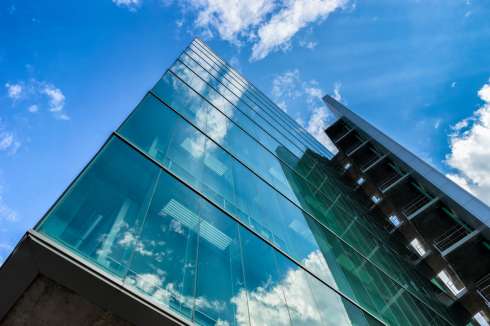Efficiency and sustainability considerations in the Commercial Property sector
With an increasing demand for sustainability and a shift towards achieving carbon neutral status, encouraged by Government targets and legislation, the commercial property market will likely see significant changes over the next decade.
Why the shift towards sustainability?
In 2019, the UK announced its goal to be net carbon neutral and end its contribution to global warming by 2050. Since then, legislation, funding and targets have represented a drive towards achieving sustainability in all sectors, including real estate. Landlords, tenants, developers, and investors now have important commercial decisions to make regarding how they can adapt to comply with sustainability legislation and rise to meet the high expectations of corporate social responsibility. There is growing consideration of environmental, social and governance factors when investing in property assets, and those who do not follow suit take the risk of losing a competitive advantage.
How must commercial property change to meet sustainability targets and legislation?
The efficiency and sustainability of buildings are commonly evaluated using Energy Performance Certificates, which rate efficiency using a scale from ‘A-G’ (A being the highest) and BREEAM, which rates the sustainability of buildings, ranging from ‘Outstanding’ to ‘Unclassified’.
The Government has announced its ambitious intention to introduce a minimum EPC rating of ‘B’ for all commercial properties by 2030. The current minimum rating is ‘E’. JLL (an international commercial real estate services company) have produced an insightful report regarding sustainability and value in the regions, including Manchester. Their research found that over 90% of commercial offices will require improvements over the next decade to meet this target. Furthermore, whilst the UK aims to achieve higher BREAM ratings, JLL found that only approximately 16% of current office space has a BREEAM rating of good to outstanding.
These findings suggest that commercial office space requires a significant amount of development and retrofitting to meet sustainability and efficiency targets, which in turn will require a substantial amount of funding.
What does this mean for landlords?
To comply with sustainability and efficiency targets, landlords of new developments will need to focus on more sustainable building designs at the outset and landlords with existing commercial property face the difficult decision of whether to rebuild, develop or sell. Many landlords will face significant costs in meeting these targets and will be questioning whether they can claw back some of this investment when leasing the property.

Can landlords recoup any of the costs of increasing property sustainability?
Firstly, JLL reported evidence to suggest more preferential interest rates for the financing of properties that will be more efficient and sustainable. This can help landlords to comply with sustainability legislation at a reduced cost.
Secondly, JLL found that buildings with a higher BREEAM and EPC rating typically yield higher rents. Therefore, landlords are likely to be able to recoup some improvement costs through higher rental income. This is likely because sustainable buildings are more attractive to tenants as the increased efficiency reduces service costs, and organisations are increasingly recognising corporate social responsibility and responding by demanding more sustainable, green buildings.
Thirdly, JLL found that buildings targeting the higher BREEAM ratings had a lower void rate and increased pace of leasing. Therefore, landlords are more likely to have occupied properties, increasing their overall rental income than those who do not create sustainable properties. This is particularly important in light of the changes in the commercial property market since the pandemic as many landlords are suffering vacant premises and a higher turnover of tenants.
Landlords must face the fact that demand for sustainable buildings will only increase over the coming years, as the Government create more legislation and targets and companies react to become more carbon neutral and remain in line with their competitors.
What impact will increased sustainability and efficiency have on commercial leases?
Rents and rent reviews
As the efficiency and sustainability of a property increase, the rent is also likely to increase. Furthermore, if a property is going to be developed throughout the term of a lease, landlords may also wish to include frequent rent reviews to reflect the increased efficiency of the property as the term progresses.
Lower utility costs
Occupying a more sustainable and efficient property will lower utility costs for the tenant, which may balance the increased rent. However, it may take a considerable amount of time to realise these cost benefits.
Rights to access property and carry out works
Landlords will need to carefully consider their right to access properties during the lease term and whether they permit them to carry out works to improve energy efficiency. Equally, tenants will be keen to ensure that such access and works cause minimal disruption to their business and use of the property.

Increased landlord-tenant cooperation
As it is the tenant who occupies the building, they will likely have valuable suggestions about what changes could be made to increase the efficiency of the property. Landlords and tenants can work together to agree on a mutually beneficial way forward, including adjusting rents during improvement works and sharing certain improvement costs in a move towards a form of ‘green lease’. You can read our previous blog on green leases for more information.
Term and Break clauses
If a landlord and tenant decide to work together to improve the efficiency of a building, both parties will want to think carefully about the term of the lease, and if and when break clauses should be included to allow them to protect the investment they are making. Alternatively, landlords of more efficient and sustainable properties may wish to offer shorter leases or increased breaks to attract higher rents, in the knowledge that they are still likely to have high rental demand due to the quality of their offering. you can read our previous blog on flexible leases if you want to learn more about break clauses and shorter leases.
Landlords and tenants will need to think carefully about how new and existing leases will need to be adapted to protect their interests during this developmental period.
Here to help
Our Commercial Property Team is experienced in handling a wide range of commercial leases and can help ensure that leases work for your business and your sustainability targets.
